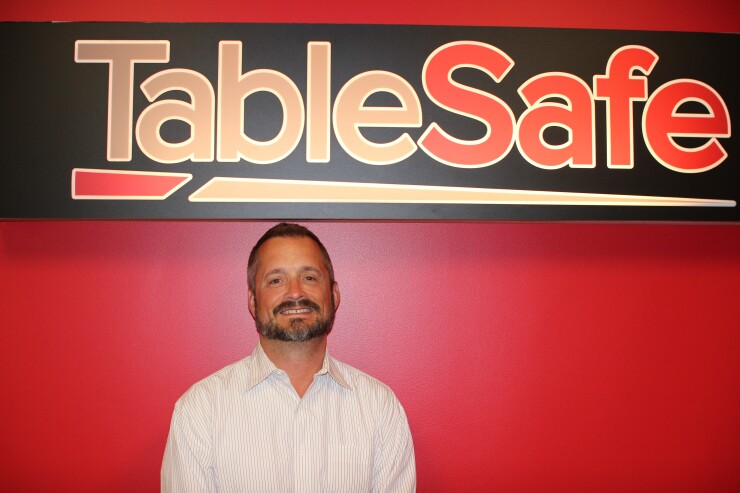It's been nearly six years in the making, but TableSafe has the EMV certification it has long needed to make its pay-at-the-table Rail platform a future-proof option for restaurants.
Seattle-based TableSafe was prepared to launch the
At the time, the premise was fairly simple. After a year of developing the technology to create some efficiency for restaurant operations, TableSafe felt it had a product late in 2012 that also would eliminate the diner's fear of card skimming when the card left the table for payment.

"Then the card companies revealed they were coming out with EMV (chip cards), and suddenly this new product we were releasing was obsolete," said Steve McKean, president of TableSafe. "We had no choice but not to release the product at that time."
In hindsight, the timing couldn't have been better, McKean said. Had TableSafe already launched its product and had a large customer base using it, the time and effort to upgrade to EMV could have been devastating for the company.
"We went down the path to EMV, but also learned along the way that it just couldn't be EMV now either," McKean said. "There were other payment capabilities coming to market and we had to understand how to engage with mobile payments and contactless cards."
The company began talking about the new capabilities of what it was calling
The result now is that TableSafe's Rail platform is certified through the CreditCall omnichannel gateway for EMV and signature, and also includes a Near Field Communication chip for mobile and contactless payments, a camera to read QR codes, and Bluetooth to help restaurant owners recognize customers at the time they are dining. Payments and EMV technology provider Cardtek is also partnering with TableSafe for the Rail launch.
Rail 2's proximity technology allows location-based messages and marketing, a promise of the original Rail concept — that the platform would help restaurant owners mine, manage and monetize customer data.
"We really had to position this as an effective platform for the future and one that restaurants could grow with over time," McKean added.
Potential clients and investors have been patient in waiting for TableSafe to get its latest version of the Rail onto the market.
"We had great momentum when the entire marketplace thought the path to EMV would not be as complex as it has turned out to be for everybody," McKean said. "But it turned out to be an advantage for our sales team, giving them time to nurture larger clients, start pilots and move into the rollout stage."
Some restaurant chains in Texas will go live with Rail next week, and the company has set up relationships with more than 30 resellers that will work to establish Rail with their restaurant clients, McKean added.
Rail integrates with Aloha and Micros POS systems, and it operates through an application programming interface that allows other POS providers to write code to connect. In addition to CreditCall certification for EMV, TableSafe is expecting the same approval from First Data and Vantiv soon.
TableSafe was likely one of several companies that were caught off guard by EMV, said Maria Arminio, president of Avenue B Consulting Inc., a Redondo Beach, Calif.-based payments management consulting firm.
"Sometimes, change amid other developments in the marketplace are best suited to waiting out the adjustment period, then allowing an opportunity to do remediation where needed to make sure the service offering is meeting the current needs of the consumer experience," Arminio said.
TableSafe's Rail keeps payment card data off of the restaurant owner's network and terminals, a method designed to ease Payment Card Industry security standards compliance.
The next challenge for TableSafe is whether it can be prepared when current EMV chips or card data of any kind is not used at all, Arminio added.
"There might be a standard in place in the future to allow transaction information to occur, while taking sensitive data out of it completely whether it be one-time tokens, or other technology that replaces all of that data," she said.
One EMV stumbling block the Rail 2 addresses is the process of a diner giving the waiter a tip, which occurs with mag-stripe technology after the meal payment has initially been put into the POS system. With EMV, the tip has to be entered ahead of time.
The Rail device has a default 20% tip option, which the diner can adjust; or the restaurant can use its back-office portal to establish a higher or lower rate on the system. When the diner chooses a tip amount, it is added at the same time as the meal payment.





